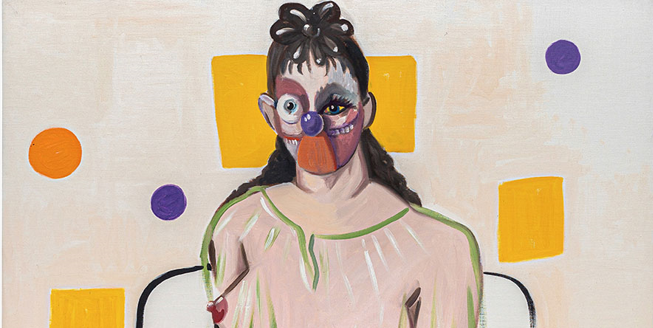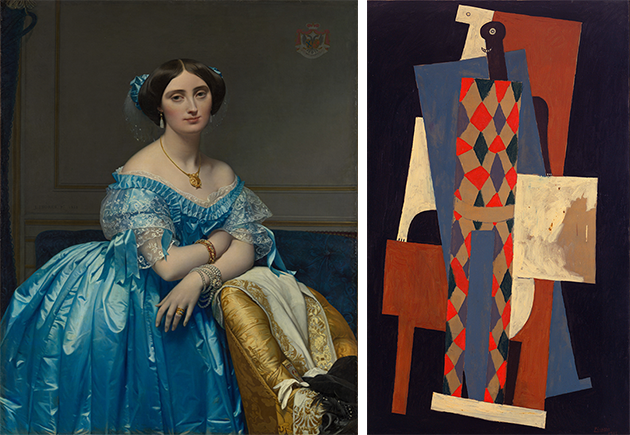20th Century & Contemporary Art Evening Sale
London Auction 13 October 2023
1
Mohammed Sami
Childhood
Estimate £80,000 - 120,000 ‡♠
Sold for £228,600
Create your first list.
Select an existing list or create a new list to share and manage lots you follow.
2
Stefanie Heinze
Median (Fin Fatale)
Estimate £60,000 - 80,000 ‡♠
Sold for £165,100
Create your first list.
Select an existing list or create a new list to share and manage lots you follow.
3
Emma Webster
Baptism
Estimate £80,000 - 120,000 ‡♠
Sold for £228,600
Create your first list.
Select an existing list or create a new list to share and manage lots you follow.
4
Christopher Hartmann
Still Looking
Estimate £20,000 - 30,000 ‡♠
Sold for £38,100
Create your first list.
Select an existing list or create a new list to share and manage lots you follow.
5
Marina Perez Simão
Untitled
Estimate £70,000 - 100,000 ‡
Sold for £95,250
Create your first list.
Select an existing list or create a new list to share and manage lots you follow.
6
Francesca Mollett
Two Thistles
Estimate £25,000 - 35,000 ♠
Sold for £254,000
Create your first list.
Select an existing list or create a new list to share and manage lots you follow.
7
Pam Evelyn
Night Fog
Estimate £30,000 - 50,000 ‡♠
Sold for £44,450
Create your first list.
Select an existing list or create a new list to share and manage lots you follow.
8
Christina Quarles
Lil' Dapple Do Ya
Estimate £450,000 - 550,000 ‡
Sold for £508,000
Create your first list.
Select an existing list or create a new list to share and manage lots you follow.
9
Michaela Yearwood-Dan
The Summit of Beauty and Love
Estimate £60,000 - 80,000 ‡♠
Sold for £228,600
Create your first list.
Select an existing list or create a new list to share and manage lots you follow.
10
Jadé Fadojutimi
Beneath the Petticoat
Estimate £150,000 - 200,000 ♠
Sold for £177,800
Create your first list.
Select an existing list or create a new list to share and manage lots you follow.
11
This lot is no longer available.
12
Luc Tuymans
Rome
Estimate £1,200,000 - 1,800,000 ‡♠
Sold for £1,500,000
Create your first list.
Select an existing list or create a new list to share and manage lots you follow.
13
Beatriz Milhazes
Mares do Sul
Estimate £600,000 - 800,000 ‡♠
Sold for £698,500
Create your first list.
Select an existing list or create a new list to share and manage lots you follow.
14
Josef Albers
Homage to the Square
Estimate £200,000 - 300,000 ‡
Sold for £609,600
Create your first list.
Select an existing list or create a new list to share and manage lots you follow.
15
Alex Katz
Ariel
Estimate £650,000 - 850,000 ‡
Sold for £698,500
Create your first list.
Select an existing list or create a new list to share and manage lots you follow.
16
This lot is no longer available.
17
Anish Kapoor
Untitled
Estimate £600,000 - 800,000 ‡♠
Sold for £825,500
Create your first list.
Select an existing list or create a new list to share and manage lots you follow.
18
On Kawara
OCT.20,1992
Estimate £250,000 - 350,000 ‡
Sold for £342,900
Create your first list.
Select an existing list or create a new list to share and manage lots you follow.
19
Günther Uecker
Ohne Titel
Estimate £180,000 - 250,000 ‡♠
Sold for £241,300
Create your first list.
Select an existing list or create a new list to share and manage lots you follow.
20
Anselm Kiefer
Das einzige Licht
Estimate £600,000 - 800,000 ‡♠
Sold for £698,500
Create your first list.
Select an existing list or create a new list to share and manage lots you follow.
21
Simon Hantaï
Tabula
Estimate £450,000 - 650,000 ‡♠
Sold for £508,000
Create your first list.
Select an existing list or create a new list to share and manage lots you follow.
22
This lot is no longer available.
23
This lot is no longer available.
24
Jean-Michel Basquiat
Untitled (Colored Boy Piano Player)
Estimate £200,000 - 300,000
Sold for £203,200
Create your first list.
Select an existing list or create a new list to share and manage lots you follow.
25
Cy Twombly
Untitled
Estimate £800,000 - 1,200,000 ‡
Sold for £914,400
Create your first list.
Select an existing list or create a new list to share and manage lots you follow.
26
Henri Matisse
Grand Nu accroupi (Olga)
Estimate £600,000 - 800,000 ‡♠
Sold for £660,400
Create your first list.
Select an existing list or create a new list to share and manage lots you follow.
27
Balthus
Étude pour ‘Le Peintre et son modèle’
Estimate £280,000 - 400,000 ‡♠
Create your first list.
Select an existing list or create a new list to share and manage lots you follow.
28
This lot is no longer available.
29
This lot is no longer available.
30
Cy Twombly
Untitled
Estimate £150,000 - 200,000 ‡
Sold for £190,500
Create your first list.
Select an existing list or create a new list to share and manage lots you follow.
31
Rick Lowe
Black Wall Street Journey #11
Estimate £60,000 - 80,000 ‡
Sold for £114,300
Create your first list.
Select an existing list or create a new list to share and manage lots you follow.
32
Banksy
Forgive Us Our Trespassing
Estimate £2,200,000 - 2,800,000 ‡♠
Sold for £2,710,000
Create your first list.
Select an existing list or create a new list to share and manage lots you follow.
33
Daniel Richter
Schakal Reloaded
Estimate £300,000 - 500,000 ‡♠
Sold for £508,000
Create your first list.
Select an existing list or create a new list to share and manage lots you follow.
34
Dana Schutz
Gravity Fanatic
Estimate £250,000 - 350,000 ‡
Sold for £495,300
Create your first list.
Select an existing list or create a new list to share and manage lots you follow.
35
George Condo
Seated Harlequin
Estimate £750,000 - 950,000 ‡
Sold for £889,000
Create your first list.
Select an existing list or create a new list to share and manage lots you follow.
36
Sarah Lucas
Jubilee
Estimate £100,000 - 150,000 ‡♠
Sold for £101,600
Create your first list.
Select an existing list or create a new list to share and manage lots you follow.
37
Damien Hirst
Five Antique Torsos
Estimate £300,000 - 500,000 ‡♠
Sold for £317,500
Create your first list.
Select an existing list or create a new list to share and manage lots you follow.
38
Caroline Walker
Fragranced
Estimate £100,000 - 150,000 ‡♠
Sold for £565,150
Create your first list.
Select an existing list or create a new list to share and manage lots you follow.
39
Louise Giovanelli
An Ex
Estimate £60,000 - 80,000 ‡♠
Sold for £76,200
Create your first list.
Select an existing list or create a new list to share and manage lots you follow.
40
Issy Wood
Cries Real Tears!
Estimate £100,000 - 150,000 ‡♠
Sold for £215,900
Create your first list.
Select an existing list or create a new list to share and manage lots you follow.
41
Maria Lassnig
Competition III
Estimate £400,000 - 600,000 ‡♠
Sold for £482,600
Create your first list.
Select an existing list or create a new list to share and manage lots you follow.
42
Alina Szapocznikow
Autoportret II
Estimate £250,000 - 350,000 ‡♠
Create your first list.
Select an existing list or create a new list to share and manage lots you follow.
43
Rudolf Stingel
Untitled
Estimate £550,000 - 750,000 ‡♠
Sold for £660,400
Create your first list.
Select an existing list or create a new list to share and manage lots you follow.
44
John Chamberlain
Druid’s Cluster (Swish)
Estimate £350,000 - 450,000 ‡
Sold for £330,200
Create your first list.
Select an existing list or create a new list to share and manage lots you follow.
45
Damien Hirst
Fear
Estimate £300,000 - 400,000 ‡♠
Sold for £349,250
Create your first list.
Select an existing list or create a new list to share and manage lots you follow.
46
Raghav Babbar
The Bath in Holy River
Estimate £30,000 - 50,000 ♠
Sold for £457,200
Create your first list.
Select an existing list or create a new list to share and manage lots you follow.

